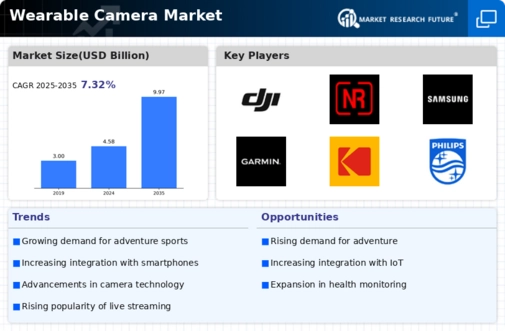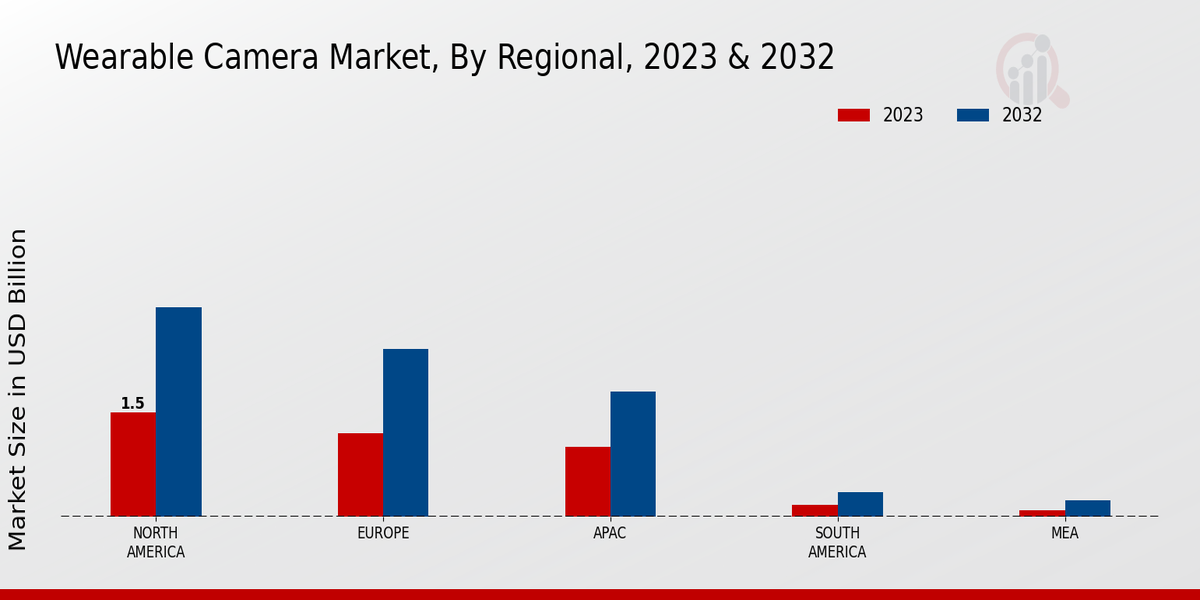Market Growth Projections
The Global Wearable Camera Market Industry is projected to experience substantial growth in the coming years. With a market value expected to reach 4.58 USD Billion in 2024 and potentially grow to 9.97 USD Billion by 2035, the industry is poised for significant expansion. The anticipated CAGR of 7.33% from 2025 to 2035 suggests a robust demand driven by various factors, including technological advancements, increased adoption in sports, and rising content creation needs. These projections indicate a favorable environment for manufacturers and stakeholders within the wearable camera market, highlighting the potential for innovation and investment.
Technological Advancements
The Global Wearable Camera Market Industry is experiencing rapid growth due to continuous technological advancements. Innovations in camera resolution, battery life, and connectivity features enhance user experience and broaden application areas. For instance, the integration of artificial intelligence in wearable cameras allows for real-time image processing and enhanced functionalities. As these technologies evolve, they attract a wider consumer base, including outdoor enthusiasts, athletes, and professionals in various fields. This trend is reflected in the projected market value, which is expected to reach 4.58 USD Billion in 2024 and potentially grow to 9.97 USD Billion by 2035, indicating a robust demand driven by technological improvements.
Rising Demand for Content Creation
The Global Wearable Camera Market Industry is significantly influenced by the rising demand for content creation across various platforms. With the proliferation of social media and video-sharing platforms, individuals and influencers are increasingly seeking innovative ways to capture and share their experiences. Wearable cameras offer a unique perspective, allowing users to create immersive content that resonates with audiences. This trend is particularly evident among vloggers and travel enthusiasts who utilize these devices to document their adventures. As the market evolves, it is expected to reach a valuation of 4.58 USD Billion in 2024, reflecting the growing appetite for engaging and authentic content.
Growing Interest in Outdoor Activities
The Global Wearable Camera Market Industry is benefiting from the growing interest in outdoor activities and adventure tourism. As more individuals engage in hiking, biking, and other outdoor pursuits, the demand for wearable cameras to document these experiences is increasing. These devices allow users to capture high-quality footage while engaging in their favorite activities, enhancing the overall experience. The trend is supported by the anticipated CAGR of 7.33% from 2025 to 2035, indicating a sustained interest in outdoor adventures. As this market segment continues to grow, wearable cameras are likely to become essential tools for outdoor enthusiasts.
Enhanced Safety and Security Applications
The Global Wearable Camera Market Industry is also driven by the increasing focus on safety and security applications. Wearable cameras are being adopted in various sectors, including law enforcement, security personnel, and personal safety. These devices provide a reliable means of recording incidents, enhancing accountability, and ensuring transparency. For example, police departments are integrating body-worn cameras to document interactions with the public, which has shown to improve trust and reduce complaints. This growing emphasis on safety is likely to contribute to the market's expansion, with projections indicating a potential market size of 9.97 USD Billion by 2035.
Increasing Adoption in Sports and Fitness
The Global Wearable Camera Market Industry is witnessing a surge in demand from the sports and fitness sector. Athletes and fitness enthusiasts increasingly utilize wearable cameras to capture their performance and share experiences on social media platforms. This trend is bolstered by the growing popularity of adventure sports and outdoor activities, where capturing high-quality footage is essential. The market's growth is further supported by the anticipated compound annual growth rate (CAGR) of 7.33% from 2025 to 2035. As more individuals seek to document their fitness journeys, the wearable camera market is likely to expand significantly, catering to a diverse audience.
















